
 |
LECTURES
All Congress participants were invited to participate in the 26th International Congress of Vexillology by delivering a presentation in Sydney. A total of 33 papers were presented over four days of the Congress. Brief details of the papers are set out below, in the order they were given, which followed a loose grouping by theme. Lecturers were requested to make their presentations interesting to an international audience of vexillologists but they did not need be "academic" in their style. Presentations were on both Australian and international topics, and were generally about 25 minutes in duration plus 5 minutes for questions and answers. Almost all the papers were delivered as Powerpoint presentaions, with longer, more detailed papers (including footnotes and references) being submitted for publication. All presentations will be compiled and published by Flags Australia as Proceedings of the 26th International Congress. The organisers will seek to publish the proceedings as promptly as possible. It is currently intended that the proceedings will be published in CD-Rom format, though the organisers will investigate the feasibility of a print edition being available at an affordable price. The Lecture Program Coordinator was Tony Burton, then Secretary and Editor of Crux Australis. Tony is also the editor of the Proceedings. With the closure of the www.icv26.com.au website Tony's contact email is tonyburton@flagsaustralia.com.au. |
|||||
| Monday, 31 August 2015: | |||||
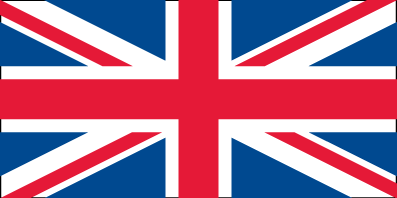 |
John Cartledge | THE RED FLAG ACROSS THE WORLD | |||
| The Flag Institute | Originally a military symbol of defiance and warning, the red flag, the oldest vexillotype of all, was adopted as the banner of revolution, first in France and from there across Europe, and later the world, that procession illustrated in this paper by reference to propaganda posters and the art of “social-realism” - the flag adopted for a time not only by Marxist states but also favoured by less doctrinaire social democratic parties. | ||||
 |
Stan Zamyatin | FLAGSCAPES - A NATURAL APPROACH TO VEXILLOLOGY | |||
Vexillology Ireland / Genealogical Society of Ireland (GSI) |
The meaning and relevance of flags is open to diverse interpretations. Most aspects of our lives are influenced and even based on natural phenomena. Flags are not foreign to this, for they are means of expressing human attachment to a familiar and natural setting – creating a sense of home, homeland, nationality, and even nationalism, a symbolism sometimes reflected literally in the abstract design of flags – hence the title “Flagscapes”. Examples especially from the 19th century Romantic Period in Europe coincide with the rise of nationalism there. The paper derives in part also from an exhibition on this theme which the author curated at the National Maritime Museum in Dublin in 2013 and explores further in a book to appear in mid-2015. | ||||
|
|||||
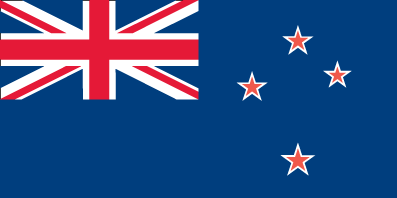 |
Malcolm Mulholland | NEW ZEALAND FLAG REFERENDUMS | |||
| New Zealand Government Flag Consideration Committee (NZFCC) | In response to an invitation from Flag Australia the NZFCC has authorised Mr Mulholland to attend, observe and speak at ICV26 on the process of possibly changing the national flag of New Zealand, first raised by Prime Minister John Key in 2014, and now implemented through a process of community-wide consultations and involvement in design concepts. | ||||
 |
Ted Kaye | FLAG CHANGE PROCESS IN FIJI | |||
| Portland Flag Association, NAVA | A road-map to reconciling community involvement and effective design expertise for a shared and agreed outcome. | ||||
 |
Nicolas Hugot | NOUVELLE-CALEDONIE: APERCU D'UN AVENIR EN SUSPENSION | |||
| Societé Francaise de Vexillologie | NEW CALEDONIA: AN OVERVIEW UPON A SUSPENDED FUTURE | ||||
| An overview of the evolution of flags and related symbols of local identity and perceptions of sovereignty in New Caledonia from the imposition of European administration, inclusion in the world of Francophonie, to the strengthening of a sense of Kanak identity and the troubled process of negotiation and compromise leading to the emergence of Kanaky as an important member of the Pacific community. | |||||
 |
Bruce Baskerville and Stephen Michael Szabo |
AUSTRALIA’S FIRST? – THE HISTORY OF THE BOWMAN FLAG RECONSIDERED | |||
Australian Heraldry Society |
Drawing on newspaper reports, 19th century pamphlets, artefacts and conservation reports, the authors contest the generally accepted origin of “The Bowman Flag” and examine alternative possibilities. Claims that the design was the inspiration for the supporters of the Arms of the Commonwealth of Australia are also challenged. | ||||
 |
Tony Burton | WE DID BUT SEE HER PASSING BY … THE 1954 ROYAL VISIT AND ITS IMPACT ON AUSTRALIAN AND NEW ZEALAND VEXILLOLOGY |
|||
| Flags Australia | The 1954 Royal Visit of Queen Elizabeth II was a signal event in Australia’s post-war social and economic transformation. The visit also left an indelible print on Australian vexillology, fixing the flag and political thinking about national symbols for a whole generation, the reverberation of that pageantry continuing to influence, even distract, debate about the national flag. The connection in the popular view between flag and monarchy was manifest in the choice of symbols displayed during the Royal Visit. The paper concludes with some observations about future emblems of identity as an ever more polycultural society comes to terms with its evolution and significant place in the Asia-Pacific region. | ||||
 |
Ralph G.C. Bartlett | AUSTRALIA’S BOXING KANGAROO FLAG - WHOSE FLAG IS IT? |
|||
| Flags Australia | More than 30 years since the yacht "Australia" raised the Boxing Kangaroo in triumph, after winning the America's Cup, the flag and variations of it has enjoyed status as a sporting symbol and popular emblem for Australia, with many claiming rights to its usage. This paper traces the arguments, popular sentiment and legalities surrounding the question of whose emblem and flag it was, and whose now. |
||||
| Tuesday, 1 September 2015 | |||||
 |
Paul Lindsay |
VEXILLOLOGY AND SOCIAL MEDIA |
|||
| Flags Australia, FOTW | An outline of how vexillinfo and its conduits have evolved in 30 years from the days of slow delivery of periodic journals, the vagaries of episodic correspondence with known flag pundits, to data and images instantly accessed through social media. From the experience as both a member of and an administrator of possibly the largest flag group in the world, the author offers insight into the advantages and pitfalls of vexillogy by new technology, with observations and speculation as to trends in the future. | ||||
 |
Sekhar Chakrabarti |
AN EARLY 20TH CENTURY INDIAN NATIONAL FLAG: REMEMBERING THE CONTRIBUTION OF AN IRISH LADY 110 YEARS AGO | |||
| Flags of India - Study Centre and Library | One of the little known aspects of early proposals for an all-India national flag, designed by an Irish woman resettled in India, and based on insignia described in the ancient Sanskrit Vedas. |
||||
 |
Nozomi Kariyasu | JAPANESE SERVICE ENSIGNS IN INTERNATIONAL TRADE ACROSS THE PACIFIC | |||
| Japanese Vexillological Association, JAVA | The growing importance of trade agreements and commerce in the Asia-Pacific basin prompts an examination of trade flags and service ensigns adopted and used, from 1854 through the Meiji Restoration to the present. | ||||
 |
Fei Xing | FLAG DISPLAY IN TRADITIONAL CHINESE ARCHITECTURE | |||
| Guangzhou University | An overview of flag usage and traditional display before the advent of European influence, with particular emphasis on the concept of feng shui – harmony between place and environment. Historical and cultural values along with practical consideration in flag display are illustrated. | ||||
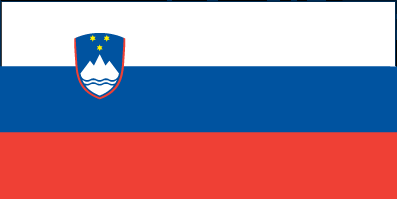 |
Aleksander Hribovšek | FALSE BACKGROUND OF THE CREATION OF THE NATIONAL FLAG OF SLOVENIA IN 1848 | |||
| Heraldica Slovenica | Digitization of the National Archives has revealed forgotten historical sources and particularly an imperial document of 1463 that sheds new light on national symbols and insignia of Slovenia either unknown or ignored in 1848 when the pan-Slavic colours were adopted. | ||||
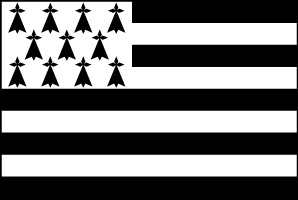 |
Alain Raullet | PARDON BANNERS IN BRITTANY | |||
| Breton Society of Vexillology, KVV | A colourful medieval flag tradition survives in Brittany of annual Spring and Summer processions with local religious flags and those of neighbouring villages, the pilgrims praying for forgiveness through the intercession of their patron saint. Vexillologically the custom transcends religious belief as part of Breton cultural patrimony. | ||||
 |
Marcel van Westerhoven |
EXPRESSION OF REGIONAL IDENTITY IN THE NETHERLANDS THROUGH FLAGS | |||
| Nederlandse Vereninging voor Vlaggenkunde, NVvV | In 2014 a representative survey was taken among citizens of the Netherlands to assess how familiar locals were with the flags of their own province. While some results were explainable, the differences in rates of recognition were staggering, with a clear divide between flags of northern and southern provinces compared with those of western and eastern provinces. The paper seeks to explain the apparent anomalies that reflect linguistic, even ethnic and historic diffferences in the development and integration of the Dutch state. | ||||
 |
Michel R. Lupant |
BELGIAN ROYAL FLAGS SINCE INDEPENDENCE | |||
| Centre Belgo-Européen d’Études des Drapeaux (CEBED ) |
A presentation of all the flags used at sea, and in the 20th century on cars, by the Kings of Belgium, from Leopold I to Philippe I. It also deals with erroneous flags appearing in many flag books from the mid-1800s, based on the national flag but with many variations of the coat of arms, a result of the adoption in 1921 of a new design for the royal flag using a rouge ponceau background. Also described are changes in style of the Royal Monogram, detail of the King’s standard as Commander-in-Chief and other emblems used on the royal train, on the palace, the royal yacht, on special occasions such as royal weddings, and finally, for royal funerals. | ||||
| Thursday, 3 September 2015 | |||||
 |
Scot Guenter | IMAGES OF THE LAND DOWN UNDER REDUX | |||
| North American Vexillological Association, NAVA | A little over a quarter of a century ago, Crux Australis published the findings of my survey of American college students on their ability to identify ten foreign flags, and among those flags, to gauge what sort of associations the Australian flag in particular provoked. This paper revisits that survey, examining possible shifts in general ability to identify flags over time as well as how Australia, when imagined, is first represented in students’ minds in the 21st century, leading to reflections on how American students, technology, and global interconnections have changed over 25 years. The analysis ends with specific suggestions for promoting cross-cultural studies of flag perceptions in the future. | ||||
 |
Jon Addison | LOOKING TO THE HEAVENS: THE AUSTRALASIAN LEAGUE FLAG OF 1851 | |||
| Queen Victoria Museum and Art Gallery, Launceston, Tasmania | Older than the Eureka, one of the earliest local flags to promote political self-determination in the Australian colonies is largely overlooked. It includes the first known use in 1851 of the Southern Cross in its celestial formation on any flag or banner, influencing the design of later colonial flags and Australia’s current national flag. | ||||
 |
Mark Risby |
MURPHY’S FLAG CHARTS | |||
| Maritime Museum of Tasmania | Presenting recently discovered Tasmanian flag charts designed, drafted and drawn by a convict guard, Private Edward Murphy, serving in Van Diemen's Land in the 1850s. They include the only known coloured illustrations of the Van Diemen's Land colonial ensign, an unofficial merchant flag created at a time of significant legislative and social development in the island penal colony, international conflict and the discovery of the huge alluvial gold deposits in the newly separate colony of Victoria and its repercussions. The charts also show the individual ensigns of two other Australian colonies, other flags of British colonies, the myriad of individual merchant ship identification flags trading with Hobart Town, the telegraphic semaphore arms and their codes, international standards of many nations, Hobart Town’s own port signals and their meaning, and examples of the signal station signalling apparatus and how it was read. | ||||
 |
Stephen Berry | WHO ARE WE? THE COPYRIGHT EFFECT EXPLAINED IN FLAGS | |||
| Flags Australia | The question of what combinations of symbols and colours most closely reflect an Australia identity is explored in a highly personal way, seeking to establish which of these, from those of the ancestral Dreamtime to those equally indigenous evolved from the heritage of later arrivals. The message is that Australians should aspire to and practice a national sense of values and place that no single interest can claim to own or exploit, much less copyright. | ||||
 |
Tracey Kim Mee | AUSTRALIAN IDENTITY: SOMEWHERE BETWEEN THE FLAGS | |||
| Flags Australia | Based on a post-graduate research project, the paper investigates the cultural significance of the Australian and Aboriginal flags in relation to national identity with emphasis on what these flags might signify to Indigenous people, especially given the consequences of British claims that for more than two centuries have led to the dominance of their own symbols. The historic dispossession of Aboriginal (and the separate Torres Strait Islander) people and their sovereignty challenges a national identity that attempts to sustain itself through ceremonial and flag-waving events. The paper includes observations on the emergence of the Indigenous flags, and notably designed by Harold Thomas, in response to imported insignia. | ||||
 |
Anne M. Platoff |
OLD FLAGS, NEW MEANINGS | |||
| North American Vexillological Association, NAVA | Flag designers often use colours and symbols they believe, or assert, have commonly understood meanings within their communities. Combined in a flag, these symbols take on new meanings. This paper examines examples, including the Confederate Battle Flag, the Gadsden Flag used by the American Tea Party, the Imperial Ethiopian flag as used by Rastafarians, the Eureka flag of Australia, and various flags seen in the Ukraine conflict. Flags have been “recycled” by groups who not only appropriate the symbol, but also assign additional meaning to the symbol – meanings not always appreciated, accepted or understood by other observers of the flag – leading to discussion on lessons old flags with new meanings teach us about the role of flags as a form of communication. | ||||
 |
Ralph D. Kelly |
FLAGS AND THE AUSTRALIAN MILITARY |
|||
| Flags Australia | Flag usage by the Australian military from the settlement of Sydney to the present is reviewed. Much of the public discussion and writings about flags and the Australian military has been limited to uninformed patriotic and political statements about whether the current national flag was “fought under” by the Australian troops in World War I and later conflicts. The flag collection of the Australian War Memorial helps establish the facts. The Australian state flags were originally created to serve as ensigns for the colonial navies, influencing the design of the Australian flag. The use the Australian National Flag by the Australian Army was initially limited by the circumstances of Australia’s military being integrated into the British Imperial Forces, whilst confusion about the different roles of the Australian red and blue ensigns has complicated the public’s understanding of the role of flags in military conflicts. The Sovereign’s and Regimental Colours are also examined together with the development of distinctive ensigns for the RAN and RAAF. |
||||
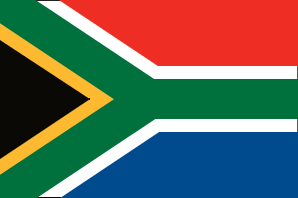 |
Bruce Berry | ZERO TO HERO – CHANGE IN ATTITUDE TO SOUTH AFRICA’S NATIONAL FLAG |
|||
Southern African Vexillological Association, SAVA |
The current South African flag was adopted just over 21 years ago when the country was riven by division and on the brink of civil war. This paper traces the change in attitude towards the flag, its role in nation-building and in creating a new national identity, to its acceptance as the country’s esteemed national symbol. | ||||
| Friday, 4 September 2015 | |||||
 |
Colin Randall | OLYMPIC FLAGS IN SYDNEY | |||
| Flags Australia | A short demonstration with the actual flags of the bids for the Olympic Games to be held in Sydney, along with the final amended version after formal allocation of the 2000 Games to Sydney. | ||||
 |
Zhao Xinfeng |
FLAG RAISING CEREMONY INAUGURATED AT BEIJING OLYMPICS 2008 |
|||
| China | China has a long and rich flag-raising history as well as flag culture. The author draws on his experience in designing the ceremonial ritual and improved technical aspects of flag raising at medal ceremonies at the Beijing Olympic and Paralympic Games in 2008 as a suggested choreography of flag raising ceremonies elsewhere. |
||||
 |
Jan Henrik Munksgaard | ADMIRAL HESSELBERG’S BOOK OF FLAGS – AN INTRODUCTION | |||
| Nordisk Flagsselskaab | Admiral Hesselberg’s Book of Flags, is a rare discovery, unpublished and dating from 1803. It is a hand-drawn manuscript depicting 249 flags and pennants from around the world and is presented at a vexillogical forum for the first time at ICV26 in Sydney. |
||||
 |
Manuela Schmöger | MAPPING FLAG USAGE IN MUNICH, GERMANY | |||
| Deutsche Gesellschaft für Flaggenkunde, e.V., DGF | This paper illustrates and analyses the findings from a survey and mapping project undertaken in Munich, Bavaria, October 2014 - July 2015 of the usage of typical and also surprising types of flags - commercial, national/sub-national, sports club, political and religious, as sampled from sections of the city with differing population densities and sociocultural background. The data will be transferred to a website including pop-up photographs of sites surveyed (similar to Google street view images). Inferences drawn from the statistical data collected are also presented. | ||||
 |
Gwen Spicer | DISPLAY AND STORAGE OF HISTORIC FLAG COLLECTIONS: A HOLISTIC APPROACH | |||
| North American Vexillological Association, NAVA | Solutions for accessing large flag collections for both display and storage challenge collection managers and conservators alike. One such developed in Maine is outlined that reduces cost, allows for rotation of exhibits while better preserving at times delicate artefacts of historic interest and heritage. The solution detailed here is cost effective and allows full access to the entire collection and is offered as a possible model for adaptation in other similar venues. | ||||
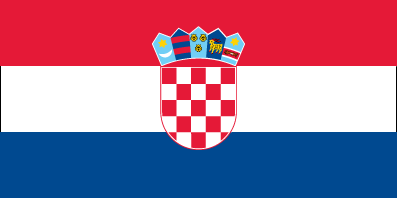 |
Željko Heimer |
TEN YEARS OF THE DICTIONARY OF VEXILLOLOGY | |||
| Croatian Heraldic and Vexillological Association (HGZD), | The Dictionary of Vexillology is a project and on-line publication begun in 2005 as part of the Flags of the World web-site as an English dictionary of vexillological terminology, compiled from various vexillological sources, with profuse illustrations explaining the concepts. After a decade of continuing updates and expansion, the paper exemplifies some issues faced by the editorial team, the decisions and how they were arived at. It also poses questions as to further development of the project and vexillological terminology in general. | ||||
 |
Edwin Crump | THE BLACK FLAG AND VIDEO GAME VEXILLOLOGY | |||
| Flags Australia | Flags permeate media and often form part of video games as in the popular 2014 release Assassin’s Creed IV: Black Flag where flags are used to locate the player geographically, racially and culturally, the flags thus are part of the “performance” of self in the gaming medium, and not without touching on the broader issue of colonialism and minority representation. | ||||
 |
Mike Thomas |
FLAGS BY DESIGN: IDENTIFYING FLAGS BY PATTERN AND COLOUR | |||
| The Flag Institute | A short study of existing flag search websites, and a detailed proposal for an on-line alternative offering cross-category location and identification. | ||||
 |
Thomas Le Bas | FLAGPOST: A PLACE FOR NEW ZEALANDERS TO REIMAGINE THEIR FLAG, TOGETHER | |||
| Designer, Flagpost | This paper outlines the investigation of the question of how design process can facilitate the democratic determination of collective identity, through the context of New Zealand’s national flag consideration process currently underway. It has been observed that the official process itself offers ‘illusion of inclusion’ public consultation though the selection of flag designs is exclusive to the decisions made by the Flag Consideration Panel - a panel chosen to select four alternatives for a national referendum. Identification of this issue highlighted a space to explore authentic and inclusive methods of consultation in this national design conversation; bridging civic participation and democratic principles with a national flag design process. Flagpost is as a web tool to give a space for the public to have their say on New Zealand flag design submissions. The platform facilitates informed decisions, dialogue, and open collaboration at a national scale. Grounded in semiotic theory, the project looks to connect flag design solutions and process to people's own values of national identity, and have those insights inform the official decision process. Flagpost offers Kiwis a place to reimagine the New Zealand flag, on their own terms, with their own voice. | ||||